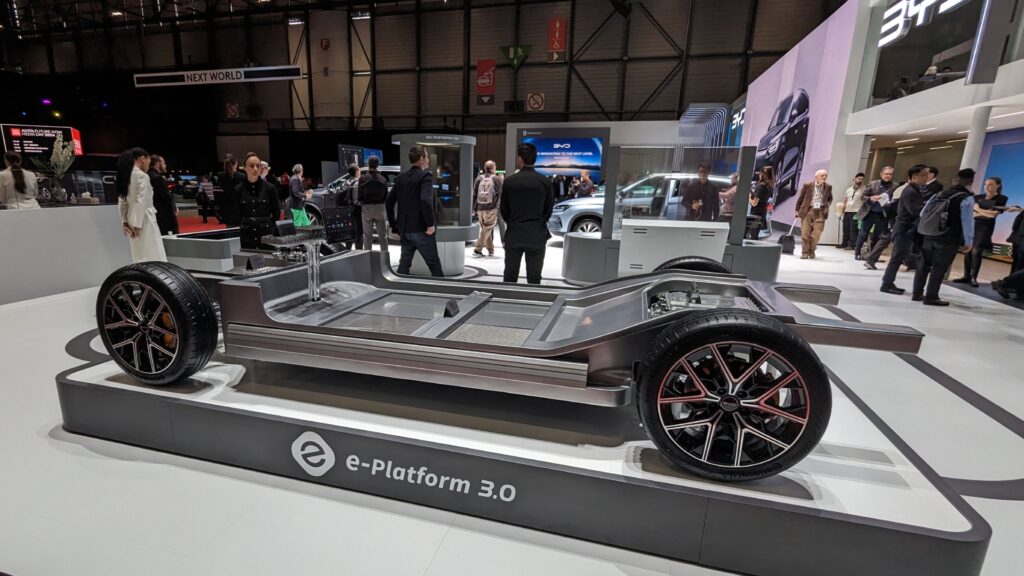BYD’s Blade batteries are appreciated by several automobile manufacturers for offering a good performance/price ratio. BYD has just announced an even better second generation.
The progress made in batteries in just a few years is enormous. But many of these innovations concern technologies that are far from being affordable for “consumer” electric cars. Fortunately, developments on the cheapest batteries are also current. This is the case of the branch dedicated to batteries at BYD, FinDreams, which is working on an evolution of its Blade battery in LFP (Lithium Iron Phosphate) chemistry available this summer, according to the media Carnewschina.
Wang Chuanfu, chairman of BYD, was quoted as saying at the April 8 financial results conference that this new generation of blade battery (blade in English) will have a smaller size and weight for the same endurance.
+27% more density on these batteries
There are currently two opposing chemistries on the market: LFP (Lithium Iron Phosphate) batteries on one side and NMC (Nickel Cobalt Manganese) chemistry batteries on the other. LFP batteries have the advantage of being much less expensive. On the other hand, their energy density is lower, they therefore offer less autonomy than a battery of the same size in NMC.
BYD has worked to improve this energy density. When launched in 2020, the density of these BYD blade batteries was 140 Wh/kg. They then increased to 150 Wh/kg. With this second generation, they will now be able to reach 190 Wh/kg, an increase of 27% compared to the batteries that equip current models.
More autonomy or less weight
With an increased density, this new generation of BYD Blade battery offers two opportunities to car manufacturers who want to equip their models with it: either offer more autonomy, or save money on each battery pack.
In the first case, for the same battery pack size, the car will be able to display a greater autonomy than currently. It is possible to envisage that models will be able to reach 1,000 km according to Chinese standards (i.e. around 800 km according to WLTP standards). To achieve these distances at the moment, for example, the BYD Seal propulsion would need to have a battery capacity significantly higher than 115 kWh instead of 82.5 kWh. Which is of course too heavy, too bulky and too expensive to be competitive.

The other interesting possibility for manufacturers consists precisely in not seeking to systematically offer more autonomy with more cells. For the same autonomy displayed, the battery will then be smaller and lighter. If the model does not need a long range, the manufacturer will be able to reduce the financial cost of the battery pack per model and normally improve the vehicle’s consumption thanks to the weight saving. A calculation that could quickly prove to be a winner in offering even more affordable electric cars.
A BYD Seagull (or Dolphin Mini in certain markets) is currently sold in China from €9,000. At this price, the base model has a 30 kWh battery for 305 km of CLTC range (Chinese standard). With better battery density, this model could offer the same autonomy in a battery of around 23 kWh, therefore even cheaper in raw materials.


BYD will certainly be the first beneficiary of this technology on its own models. Other manufacturers have also opted for these LFP blade batteries from the Chinese BYD. The best known is Tesla for the rear-wheel drive Model Y which leaves the Berlin factory, but it is also possible to cite Ford, Kia, Hyundai or Toyota, when they offer LFP variants in certain markets, which is not is not really the case in Europe.
More efficient and less expensive batteries are exactly the kind of subject that we take pleasure in discussing in our newsletter dedicated to electric mobility. Subscribe to Watt Else, it’s free.
Subscribe to Numerama on Google News so you don’t miss any news!
